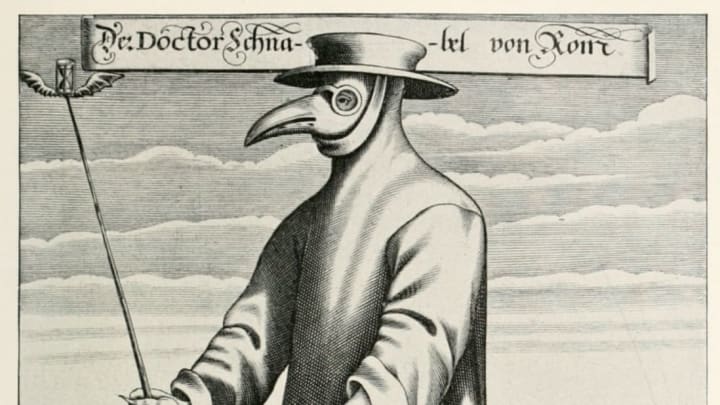Long ago, European physicians believed that "bad air" caused illnesses—scientists like Louis Pasteur, Robert Koch, and Joseph Lister hadn’t yet delivered scientific proof of the germ theory of disease. To safeguard themselves against miasma, as they called this harmful air, doctors donned a curious accessory while treating sickly patients: a mask with a long, bird-like beak, which was stuffed with dried flowers, herbs, and spices. (Today, you might recognize it from the “plague doctor” costumes worn during the Carnival of Venice, as it’s associated with Il Medico della Peste, the famous commedia dell’arte character.)
Doctors are said to have embraced this look, thanks in part to the Black Death, which ravaged the Middle East, Asia, and Europe during the 14th century. However, there’s no concrete evidence that physicians of the era wore these face coverings. In fact, medical historians say they weren’t invented until three centuries later, when a 16th century French doctor named Charles de Lorme likely designed what could be described as one of history's earliest hazmat suits during later waves of the plague.
Doctor de Lorme (1584-1678) was the chief physician to Louis XIII, and is credited with the mask’s design. He is also responsible for its typical accompanying outfit, which consisted of a leather overcoat, breeches, a cane, a wide-brimmed hat, gloves, and boots. Here’s an early textual description from the Encyclopedia of Infectious Diseases: Modern Methodologies:
The nose [is] half a foot long, shaped like a beak, filled with perfume with only two holes, one on each side near the nostrils, but that can suffice to breathe and carry along with the air one breathes the impression of the [herbs] enclosed further along in the beak. Under the coat we wear boots made in Moroccan leather (goat leather) from the front of the breeches in smooth skin that are attached to said boots, and a short sleeved blouse in smooth skin, the bottom of which is tucked into the breeches. The hat and gloves are also made of the same skin … with spectacles over the eyes.
The suffocating clothing ensemble was designed to protect the skin from exposure to miasma (the coat was even tucked into the mask), while the hat was simply a common accessory worn by physicians at the time. Meanwhile, the wooden cane was likely used to keep a distance from ill patients, or to instruct caregivers on how to move them during exams.
So, if you see someone wearing a plague doctor costume this Halloween and their history isn’t quite up to snuff, make sure they share their candy with you first, before gently correcting them that their silly-looking mask isn't technically a part of the Black Plague's lasting legacy (even if it is extra-creepy looking).
[h/t Historyanswers.co.uk]
